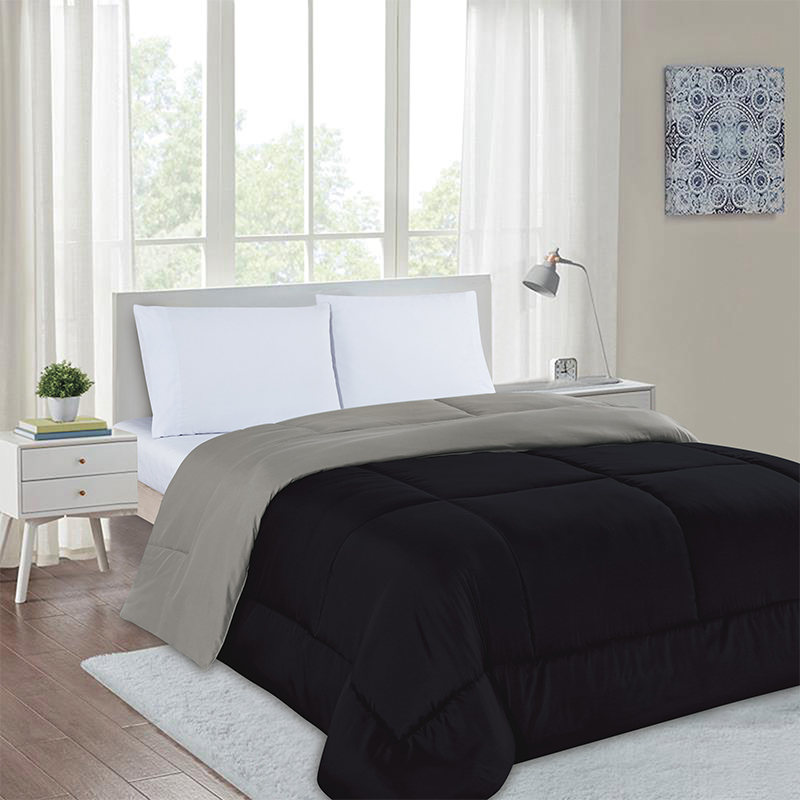When it comes to crafting a Quilted Winter Comforter , precision and innovation are key. Behind every cozy, stylish comforter lies a world of advanced manufacturing techniques that ensure durability, even distribution of filling, and consistent quality. From cutting-edge stitching technologies to rigorous quality control processes, the production of quilted comforters is as much about artistry as it is about engineering. Whether you’re a manufacturer looking to refine your process or a consumer curious about what goes into creating these winter essentials, understanding these techniques can deepen your appreciation for the craftsmanship behind every quilted comforter.
One of the most significant advancements in the production of quilted winter comforters is the use of computerized quilting machines. These machines have revolutionized the industry by enabling intricate patterns to be stitched with unparalleled accuracy. Unlike traditional hand-stitching, which can be time-consuming and prone to human error, computerized systems allow for consistent, repeatable designs that enhance both the aesthetic and functional qualities of the comforter. For instance, complex geometric patterns or custom motifs can now be executed with precision, adding a touch of elegance to any bedroom. Moreover, these machines can handle large-scale production without sacrificing quality, making them an invaluable tool for brands aiming to meet growing consumer demand. When shopping for a quilted comforter, look for products made with advanced stitching techniques—these are often indicators of superior craftsmanship and longevity.

But stitching is only one piece of the puzzle. Ensuring even distribution of filling material is another critical aspect of manufacturing high-quality quilted winter comforters. Imagine sinking into bed only to find that the filling has shifted to one corner, leaving you with cold spots and uneven warmth. To prevent this, manufacturers employ specialized techniques such as baffle-box construction or channel stitching. Baffle-box designs use vertical fabric walls between the top and bottom layers of the comforter, creating discrete compartments that keep the filling in place. This not only enhances the comforter’s thermal performance but also prevents clumping over time. Similarly, channel stitching involves sewing parallel lines across the comforter, which allows the filling to move slightly while still maintaining an even spread. These methods ensure that every inch of your quilted winter comforter provides consistent warmth, making it a reliable companion on chilly nights.
Quality assurance doesn’t stop at stitching and filling distribution—it extends to every stage of the manufacturing process. Rigorous testing and inspection protocols are essential to guarantee that each comforter meets industry standards for durability and performance. For example, manufacturers often subject their products to stress tests that simulate years of use, ensuring that the stitching holds up and the filling remains intact. Additionally, materials undergo thorough checks for softness, breathability, and hypoallergenic properties, especially for comforters marketed to health-conscious consumers. Brands that prioritize quality control can offer longer warranties and build greater trust with their customers. If you’re investing in a quilted winter comforter , opting for one from a reputable manufacturer with robust quality assurance practices can save you from potential headaches down the line.
Another area where innovation shines is in the integration of sustainable practices into the manufacturing process. As consumers become more environmentally conscious, manufacturers are exploring ways to reduce waste and energy consumption during production. For instance, some companies have adopted zero-waste cutting techniques that maximize the use of fabric, minimizing scraps that would otherwise end up in landfills. Others are experimenting with eco-friendly dyes and finishes that reduce water usage and chemical runoff. These efforts not only benefit the planet but also enhance the appeal of quilted comforters to eco-minded buyers. By choosing a sustainably produced comforter, you’re not just staying warm—you’re also supporting ethical manufacturing practices.
The production of a Quilted Winter Comforter is a sophisticated blend of technology, design, and quality control. From the precision of computerized quilting machines to the meticulous attention to filling distribution and sustainability, every step in the process contributes to creating a product that’s as durable as it is cozy. Whether you’re wrapping yourself in a beautifully stitched comforter or admiring its even warmth distribution, you can rest assured that countless hours of expertise have gone into making it perfect. So, the next time you’re in the market for a quilted comforter, take a moment to appreciate the craftsmanship behind it—and choose one that reflects the care and innovation you deserve.
